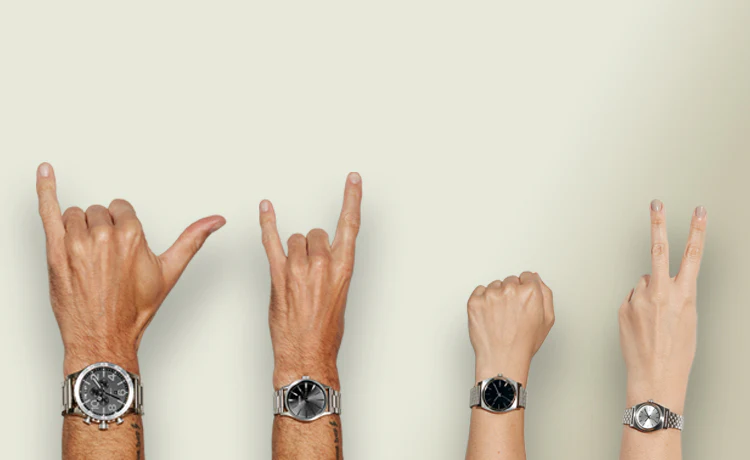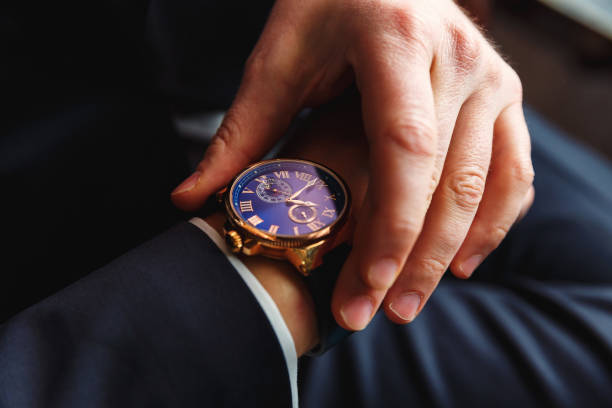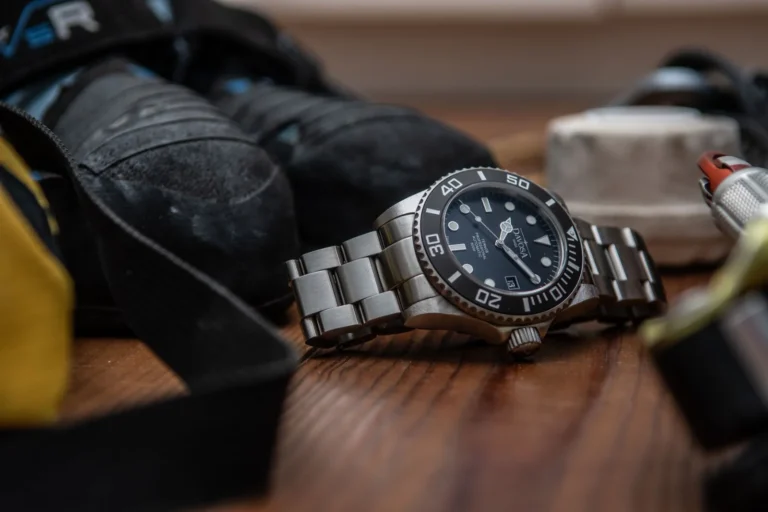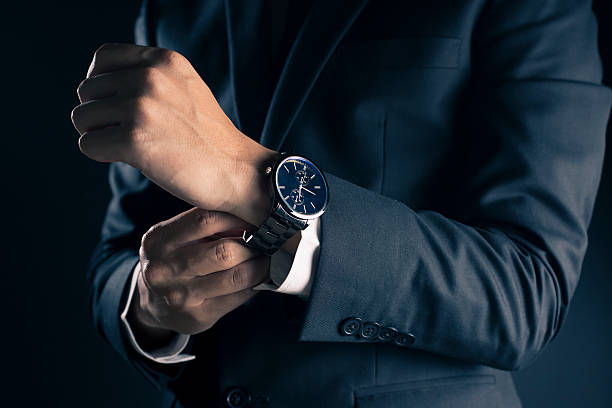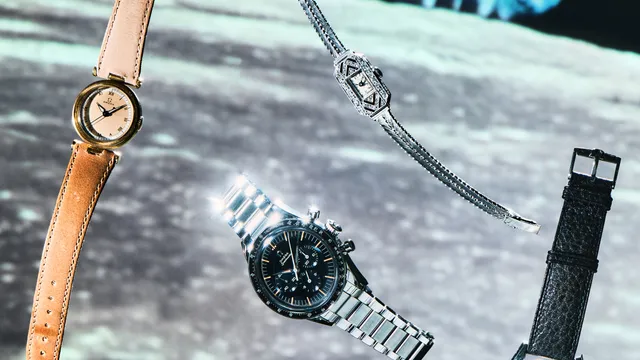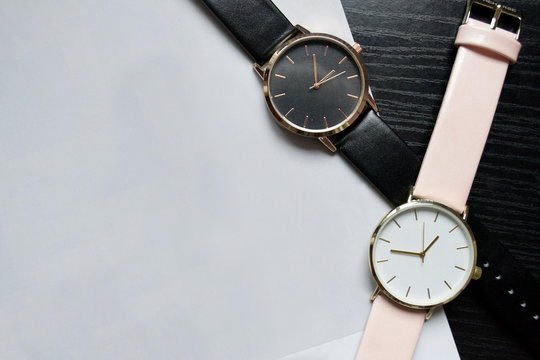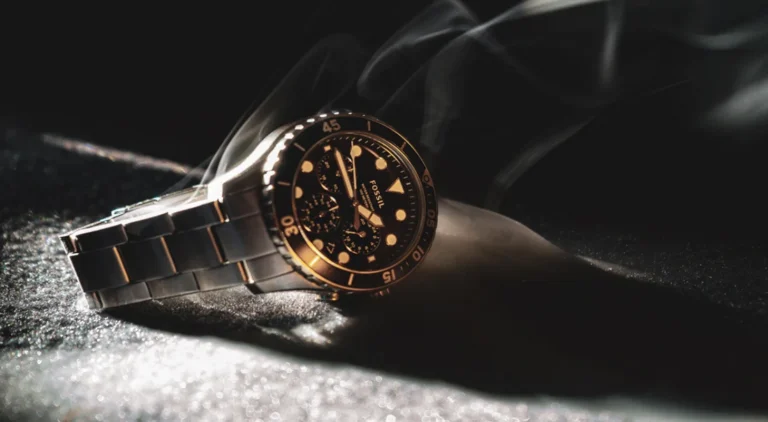Your Complete Guide to Proportions and Sizes of Watches
Your Complete Watch Guide Choosing the appropriate watch size is essential for comfort and style. A watch that is too big can look unwieldy and ungainly, and one that is too small can look out of proportion and unimpressive. By demystifying the world of watch sizes, this in-depth guide, “Wrist Wrapped Right: Your Definitive Guide to Watch Sizes and Proportions – Unveiling the Secrets to Perfect Fit and Flattering Aesthetics, Ensuring Your Timepiece Complements Your Wrist and Elevates Your Personal Style with Unmatched Comfort and Confidence,” will give you the knowledge you need to select a watch that enhances your personal style and perfectly fits your wrist.
I. Understanding the Dimensions: Key Measurements for Watch Sizing
- Case Diameter:
- The most common measurement, referring to the width of the watch case (excluding the crown).
- Measured in millimeters (mm).
- Determines the overall visual impact of the watch.
- Lug-to-Lug Distance (Lug Span):
- The vertical distance between the tips of the lugs (where the strap attaches).
- Impacts how the watch sits on the wrist.
- Crucial for ensuring the watch doesn’t overhang your wrist.
- Case Thickness:
- The height of the watch case.
- Influences the watch’s profile and how it fits under sleeves.
- Thicker watches tend to be sportier or more rugged.
- Strap/Bracelet Width:
- The width of the strap or bracelet where it attaches to the lugs.
- Should be proportionate to the case size.
- Impacts the overall balance of the watch.
II. Finding Your Ideal Fit: Wrist Size and Proportions
- Measuring Your Wrist:
- Use a flexible measuring tape to measure the circumference of your wrist just above the wrist bone.
- Alternatively, you can use a piece of string and then measure it with a ruler.
- Wrist Size Categories:
- Small Wrists: Approximately 6 inches (152 mm) or less.
- Medium Wrists: Approximately 6.1 to 7.5 inches (155 to 190 mm).
- Large Wrists: Approximately 7.6 inches (193 mm) or more.
III. The Golden Rules: Case Diameter and Wrist Size Correlation
- General Guidelines:
- Small Wrists: Case diameters of 34-38 mm.
- Medium Wrists: Case diameters of 38-44 mm.
- Large Wrists: Case diameters of 44-48 mm or more.
- Lug-to-Lug Considerations:
- Ensure the lug-to-lug distance doesn’t exceed the width of your wrist.
- A watch that overhangs your wrist will look too large and feel uncomfortable.
- Case Thickness and Style:
- Dress watches generally have thinner cases, while sports watches tend to be thicker.
- Consider the watch’s intended use and style when evaluating case thickness.
IV. Style and Preference: Beyond the Numbers
- Dress Watches:
- Typically smaller and thinner for a refined and elegant look.
- Case diameters of 36-40 mm are common.
- Sports Watches:
- Often larger and thicker for a rugged and sporty appearance.
- Case diameters of 42-46 mm are common.
- Vintage-Inspired Watches:
- Often smaller case sizes, reflecting historical trends.
- Case diameters of 36-40mm are very common.
- Oversized Watches:
- Some individuals prefer larger watches for a bold and contemporary look.
- However, ensure the watch doesn’t overwhelm your wrist.
- Personal Preference:
- Ultimately, the best watch size is the one that you feel most comfortable and confident wearing.
V. Visual Proportions: The Art of Balance
- Dial Size:
- A larger dial can make a watch appear bigger, even if the case diameter is relatively small.
- Bezel Size:
- A wide bezel can make the dial appear smaller.
- Strap/Bracelet Proportions:
- A wider strap or bracelet can balance a larger case size.
- A thinner strap or bracelet can make a smaller case size appear more delicate.
VI. Practical Tips for Trying On Watches:
- Try On Different Sizes:
- Visit a watch store and try on various sizes to see how they look and feel on your wrist.
- Take Photos:
- Take photos of yourself wearing different watches to evaluate their proportions from a distance.
- Consider Your Wardrobe:
- Choose a watch size that complements your overall style and wardrobe.
- Seek Expert Advice:
- Consult with a watch specialist for personalized recommendations.
VII. The Final Verdict: Confidence and Comfort
- The perfect watch size is a harmonious blend of objective measurements and subjective preferences.
- Prioritize comfort, ensuring the watch sits comfortably on your wrist.
- Choose a size that makes you feel confident and stylish.
By understanding the nuances of watch sizes and proportions, you can confidently select a timepiece that perfectly complements your wrist and enhances your personal style.

